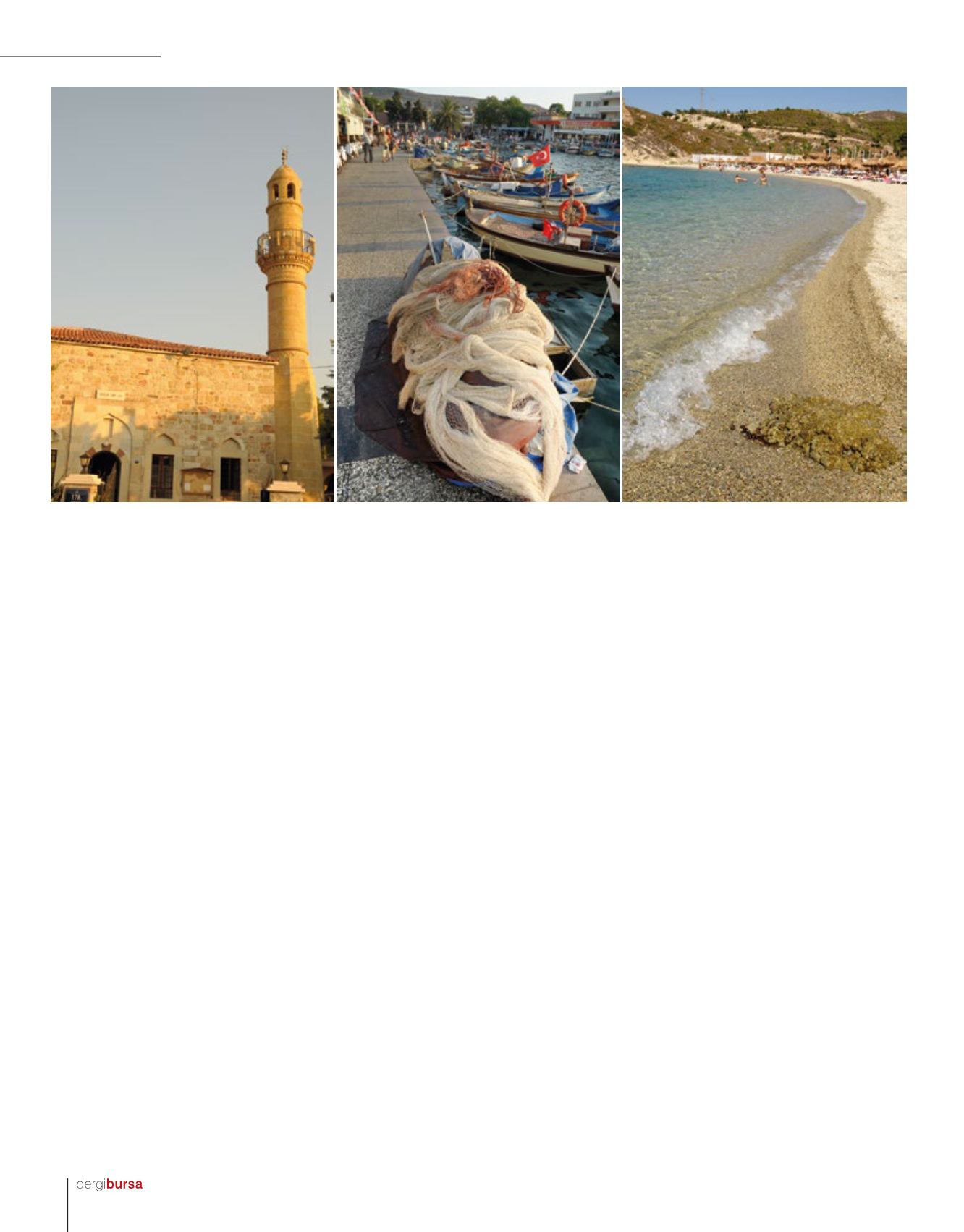
106
Antik Çağ’dan emanet
bir Egeli
Antik dönemde Foça’ya
Phokaia demişler, İon
yerleşkeleri arasında en önemli
merkezlerden birisiymiş.
Denizcilikle ün yapmış
Phokaialılar; 50 kürekli, 500
yolcu taşıma kapasiteli, hızlı
gemilerle Ege, Akdeniz ve
Karadeniz’e açılarak çok
sayıda koloni kurmuşlar... En
önemli koloniler; Karadeniz’de
Amysos (Samsun), Çanakkale
Boğazı’nda Lampsakos
(Lapseki), Midilli Adası’nda
Methma (Molyvos), Güney
İtalya’da Elea (Velia),
Korsika’da Alaila, Güney
Fransa’da Massalia (Marsilya),
Nice ve Antibes, İspanya’da
Ampuria imiş... Böylece
Phokaia pek çok Anadolu
ve Avrupa kenti için başkent
niteliği taşımış...
Adını kenti çevreleyen adalarda
yaşayan foklardan alan Phokaia
İ.Ö.11. yüzyılda Aiollerce
kurulmuş. Batı uygarlığının
temelleri burada atılırken,
felsefenin, mimarlığın ve
heykeltıraşlığın da öncüsü
olmuş Foça. Birçok antik çağ
karakterine ev sahipliği yapmış.
Pers (İran) saraylarını süslemiş
heykeltıraş Telephantes,
ünlü mimar Theodoros, Iade
deniz savaşını yöneten ve
adını şarap tanrısından alan,
Phpkaialı Komutan Dionysos
gibi. Özellikle kil sanatının
gelişmiş olduğu arkeolojik
kazılardan çıkan eserlerden
kolayca anlaşılabiliyor. 3
dönem süren kazılarda Athena
Tapınağı’na ait önemli eserler
çıkartılmış... Phokaia Perslerin
tahrip ettiği ilk iyon kenti olma
özelliğini de taşıyor. Fakat
Büyük İskender’in Anadolu’ya
gelerek Pers egemenliğini
ortadan kaldırması ile Helenistik
Dönem başlamış ve şehir farklı
bir gelişim sergilemiş. Şehir
İskender’in ölümünden sonra
ise, Seleukosların, Bergama ve
Roma Krallıkları’nın yönetimine
girmiş. Erken Hristiyanlık
Dönemi’nde ise bir piskoposluk
merkezi olmuş... 13. yüzyılda
Türk beyliklerinden Çakabey’in
daha sonra Saruhan Beyliği’nin
yönetimine geçen Foça, Fatih
Sultan Mehmet tarafından 1455
yılında Osmanlı topraklarına
katılmış. 15 Mayıs 1919’dan
kurtuluş günü olan 11 Eylül
1922 tarihine kadar ise
Yunanlıların işgali altında
kalmış.
dominance, the Hellenistic period
started and the city displayed a
different development. After the
death of Alexander the Great,
the city was under the control of
Seleucids, Pergamo and Roman
Empire. In the early Christian
Period, it was the center of
episcopalism. In the 13th century,
first being ruled by Cakabey
and then by Saruhan Bey, Foca
was annexed to the Ottoman
territory by Fatih the Conqueror
in 1455. From May 15,1919 to
September 11, 1922 which is the
Independence day of the city, it
was occupied by the Greeks.
Foca has recorded historical
values that are known by
everyone. One of those is Persian
Mausoleum (Stone House). This
mausoleum, located almost 7
kilometers from Foca to the East,
was built with the Lydia / Lycian
traditions under the influence of
Persians in the 4th century B.C.
Known as the oldest theater of
Anatolia, 4,5 meters in height, the
Antique Theater is also another
structure that was revealed by
the archaeological excavations.
The theater was made out of tuff,
known as the Stone of Foça in
the region, which is not a type
of durable rock, yet the Archaic
wall, which proves that Foça
had a rampart of 5 kilometers
long in Archaic Period, is in
good condition. These walls are
referred to as Herodotus Wall
as historian Herodotus often
mentioned them. It is determined
that the 4 meters wide space
located near the buttress wall is
the city gate, the wooden girders
of the 5 meters wide towers
on both sides of the gate are
charred by fire. The family tomb,
referred to as Devil’s Bath, was
constructed by carving out of
rocks during the Antique Period.
The grave consists of a long
aisle and two burial chambers.
Still there are excavations in the
town. In the latest excavations,
Archaic, Classic, Hellenistic and
Roman period settlement layers
were revealed. One of the floor
mosaics of a villa of the Roman
period is still there. The other was
found beyond, partly damaged.
There are many pieces of art that
belongs to Foca in İzmir Museum
of Archeology.
Cybele Open-Air Temple is
another historical value of the
town. There are statues and
reliefs of Goddess Cybele that
were placed on five niches of
various sizes. Together with votive
pool the small niches carved
on rocks for the sailor lanterns
indicate that people coming from
the sea worshiped in this place.
The ramparts over the rocks on
which the sanctuary rests show
the four different periods of wall
construction. Archaic ramparts
are made without mortar. The
origin of Athena goes back to
gezi - yorum
travel - ing


